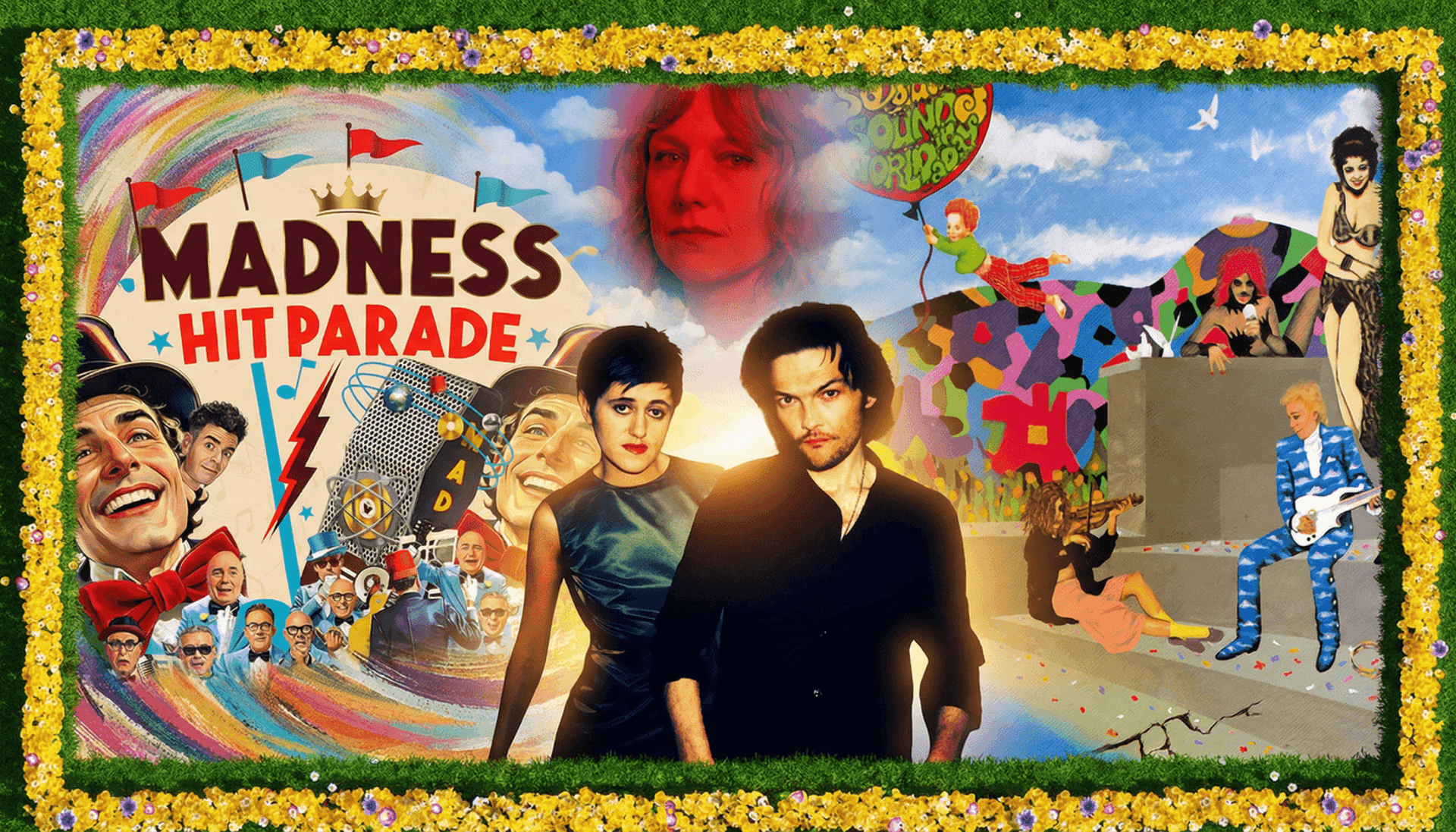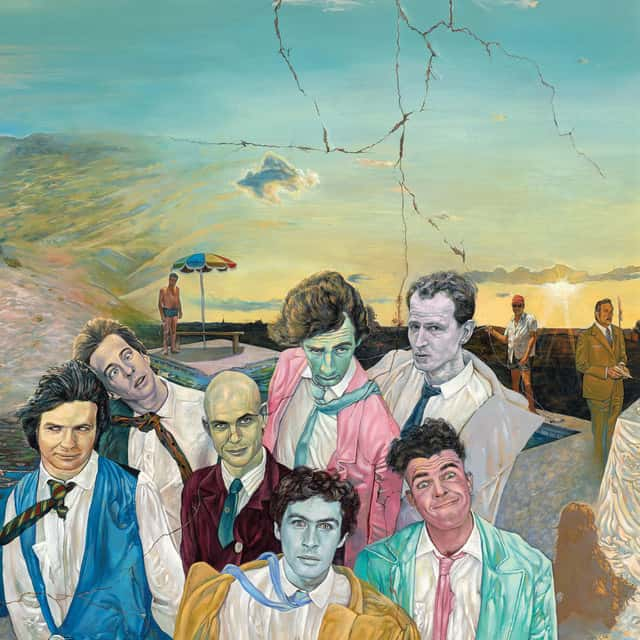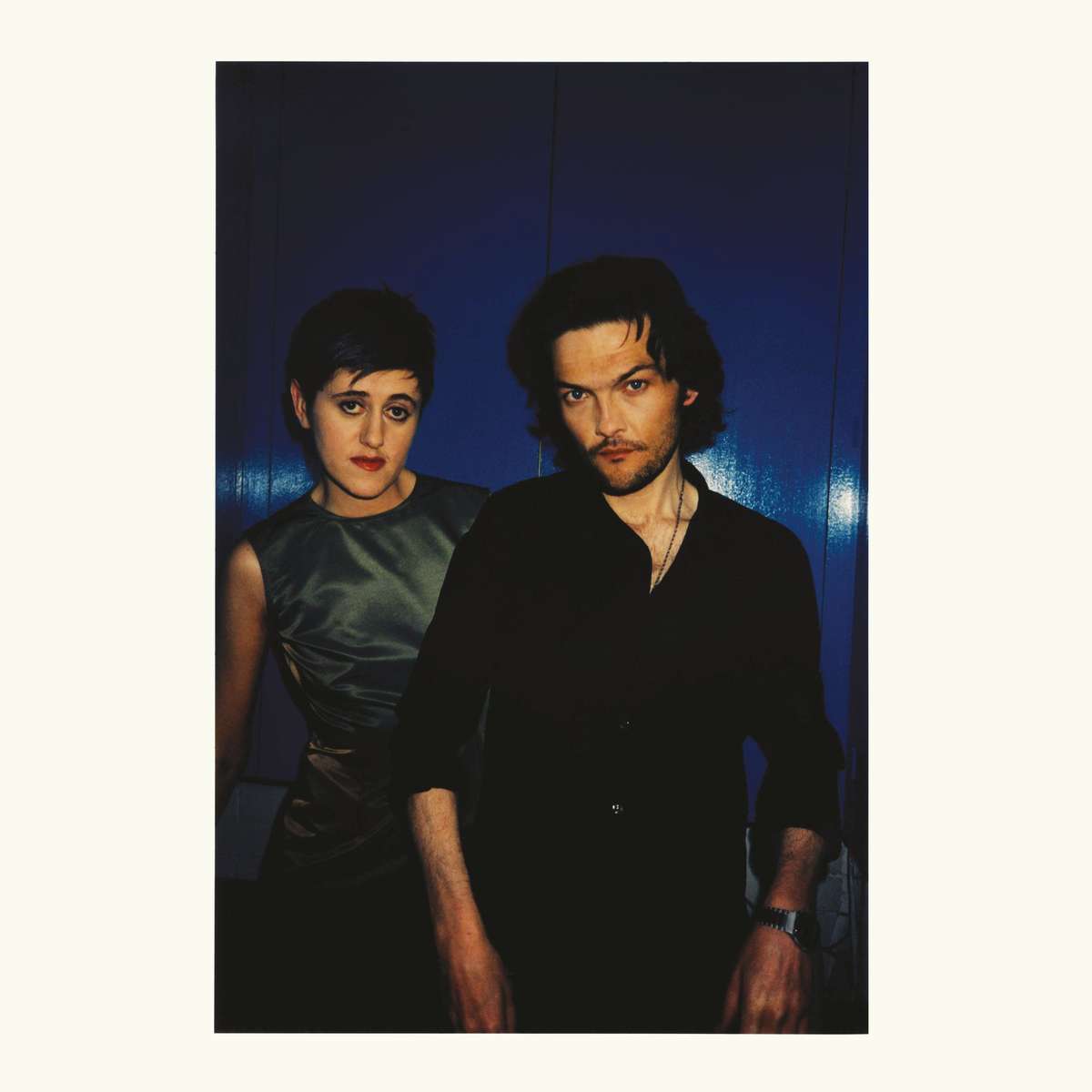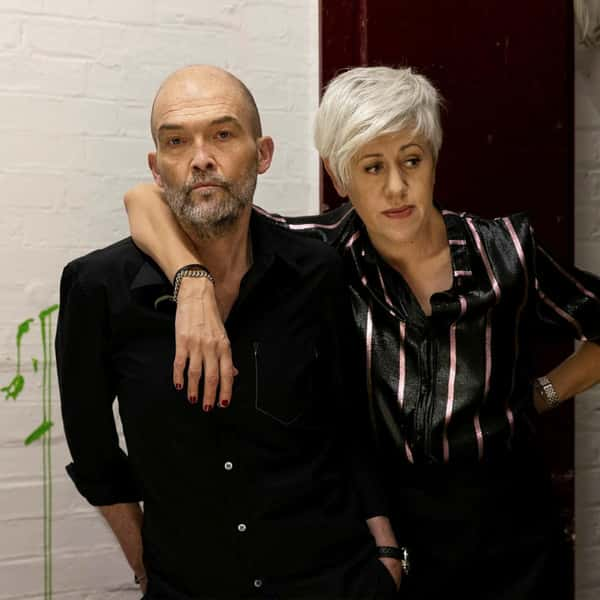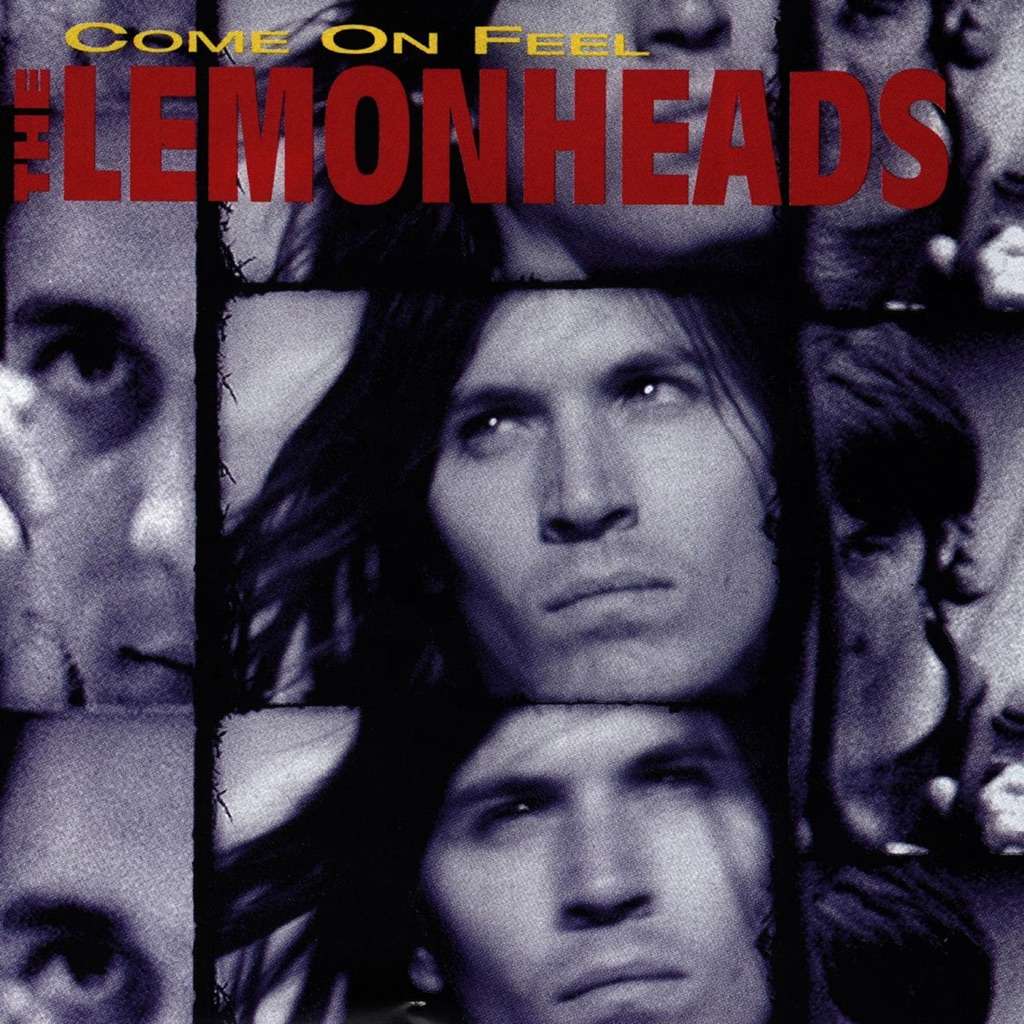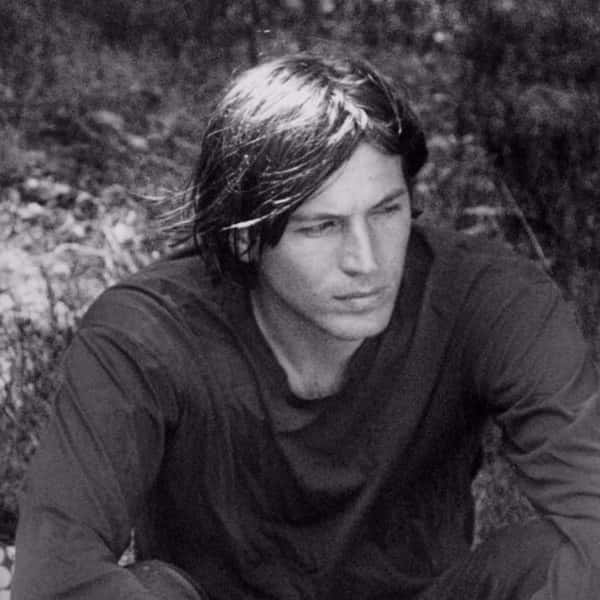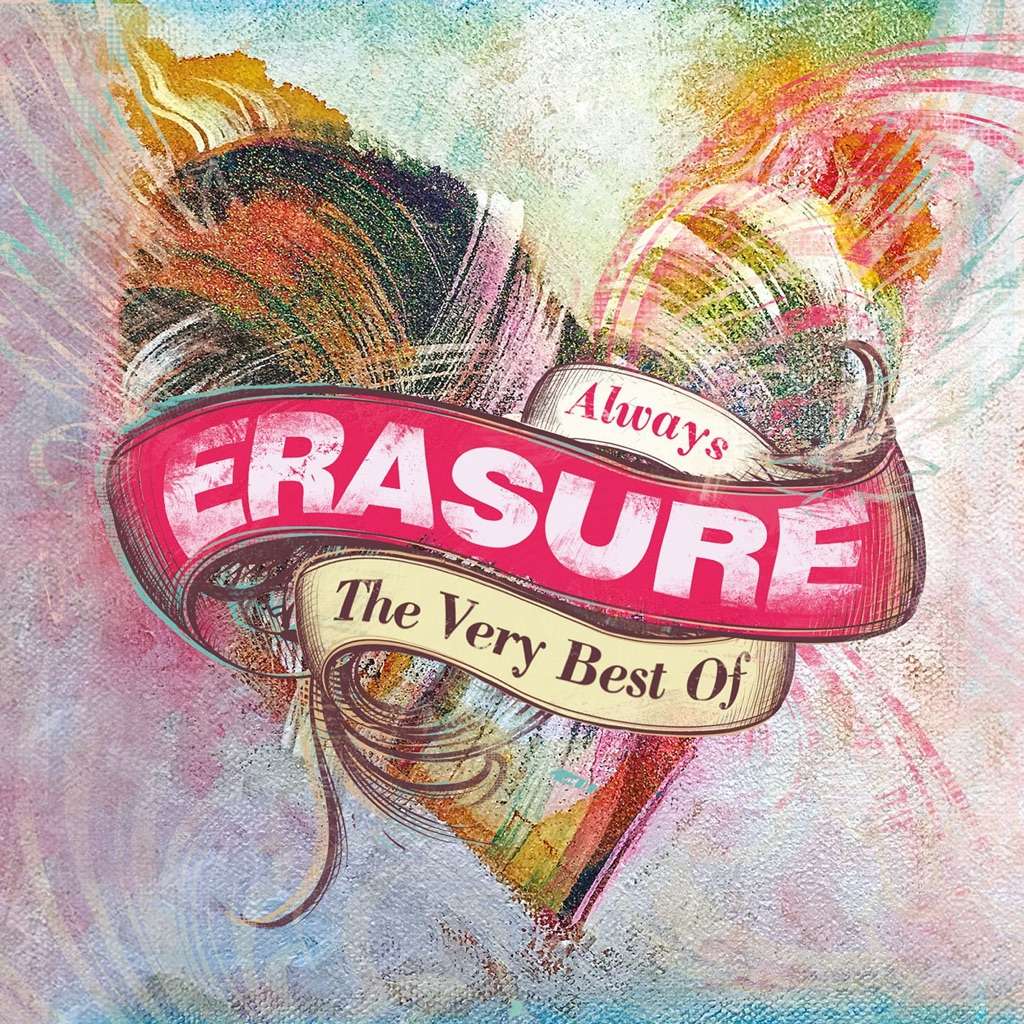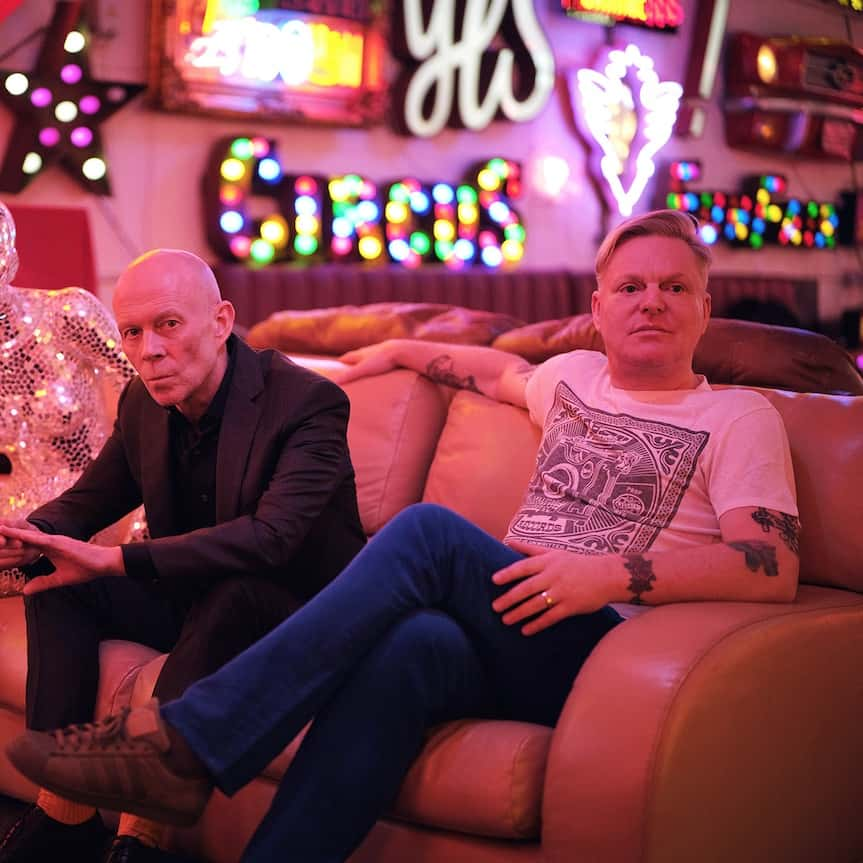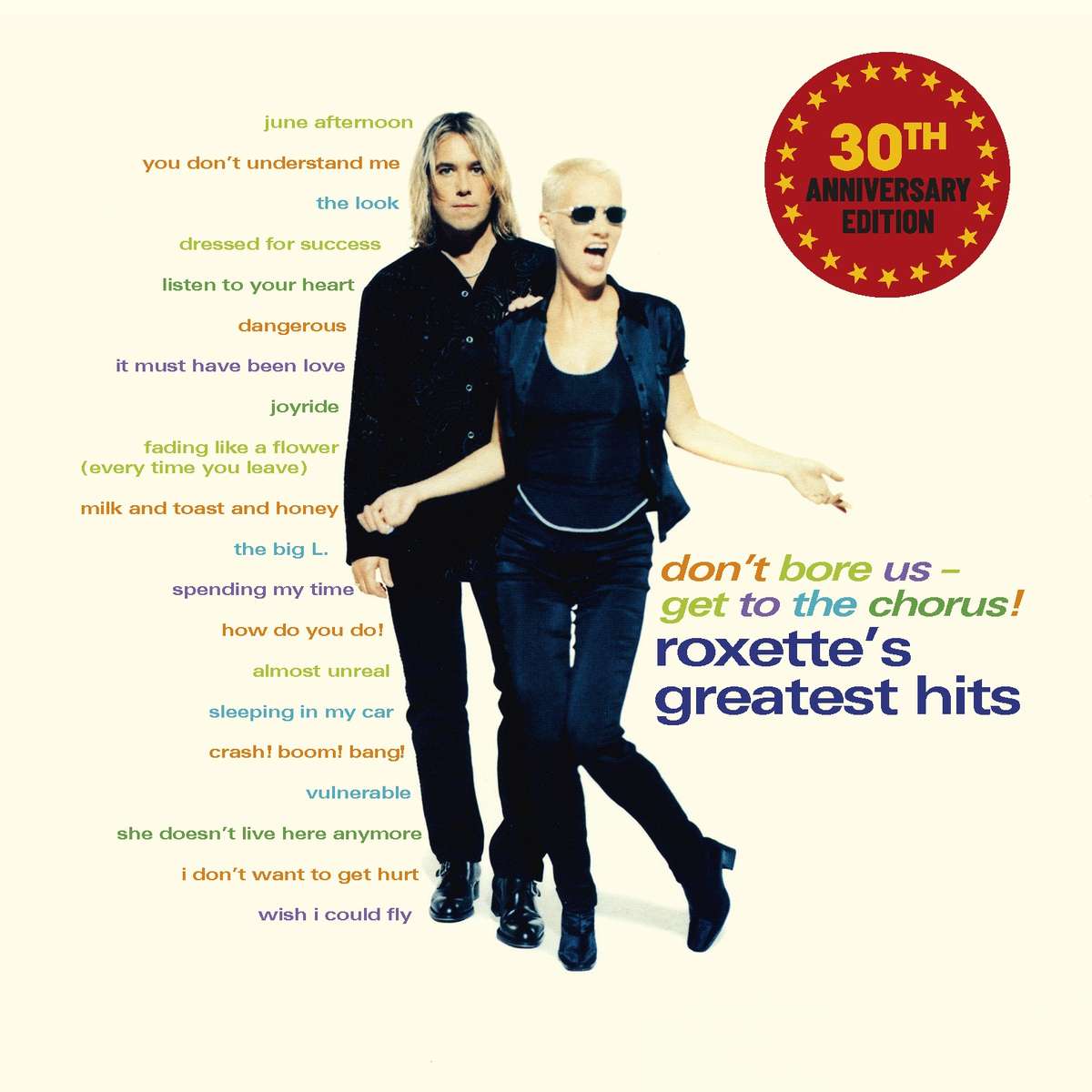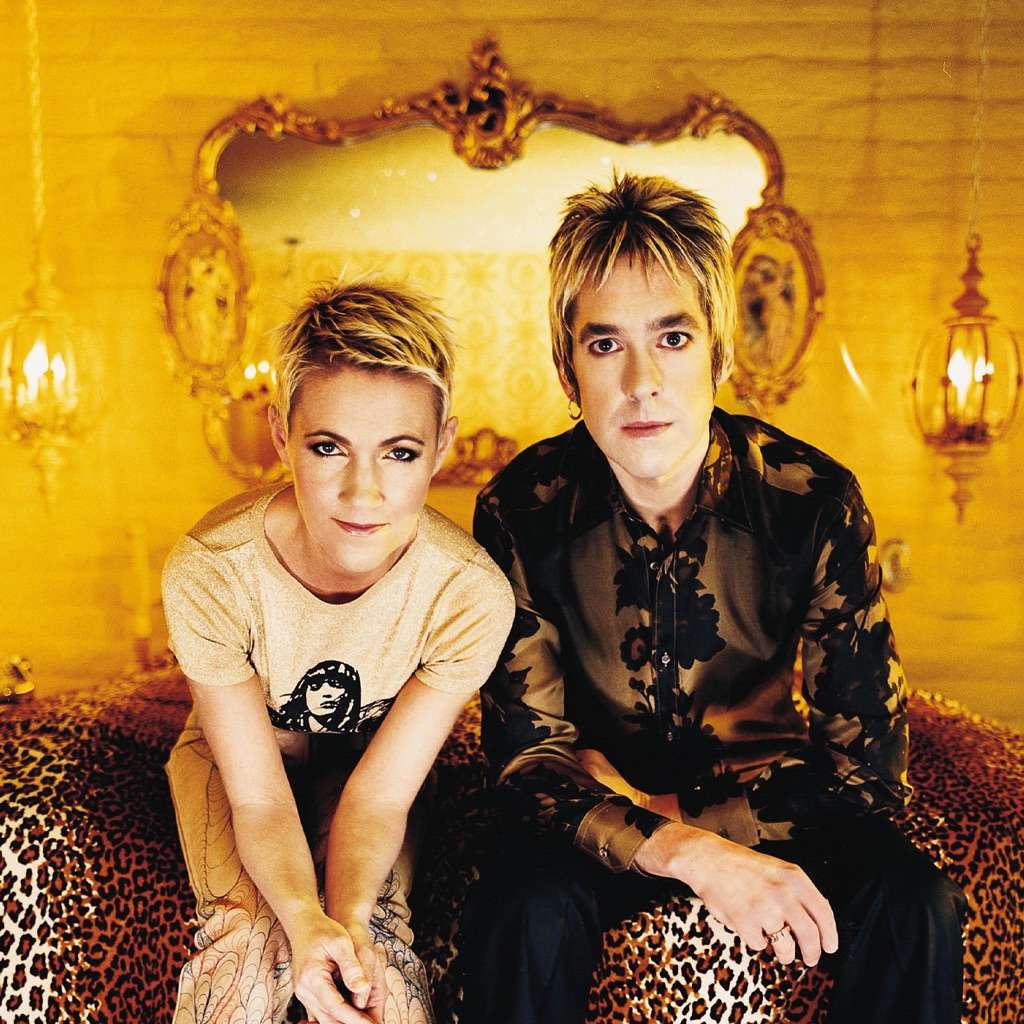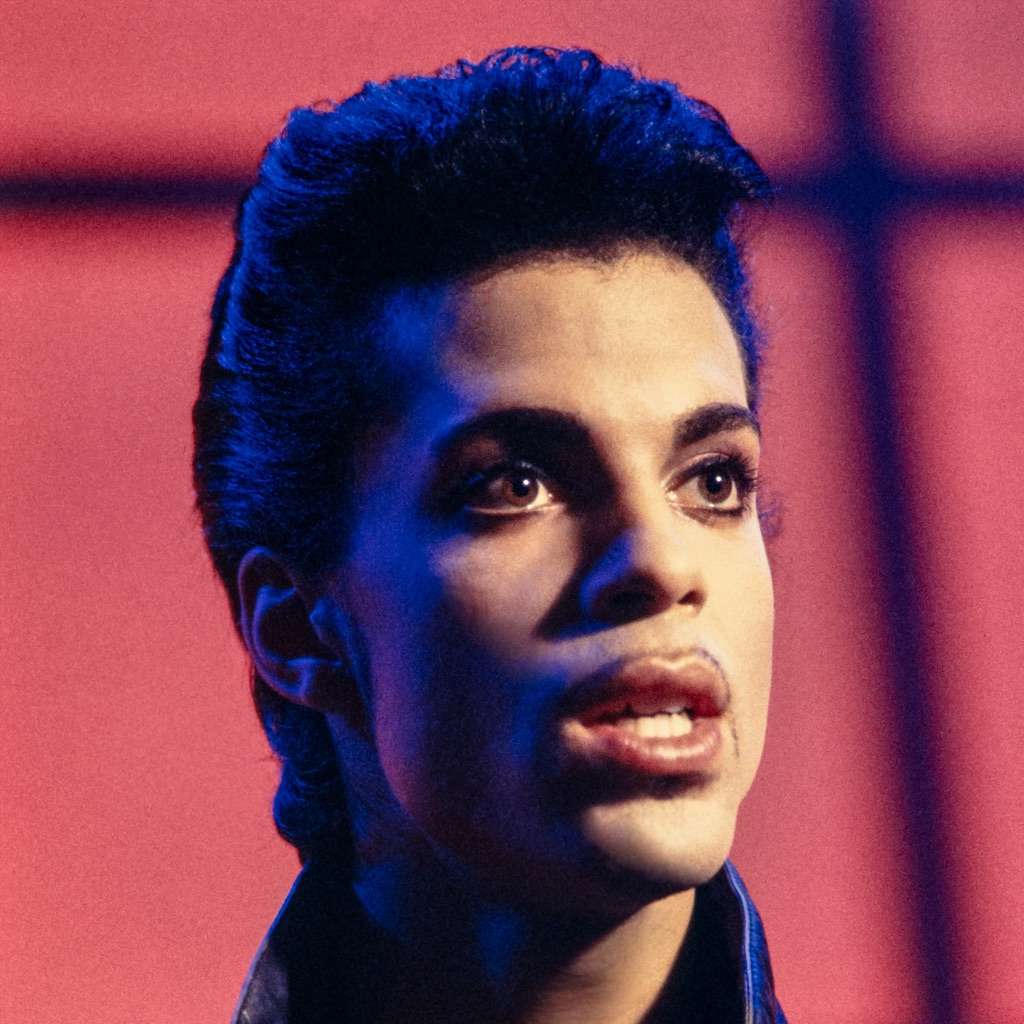From Two Tone to Velvet Synths A Journey Through Melancholy and Joy
Hit Parade 1979–2024 + Bonus 7 Single by Madness 🎺🎶
Recording history & creation — a career stitched together 🧵
This is a career-spanning compilation that reads like a musical biography: 45 singles sequenced chronologically from The Prince (1979) through the band’s recent output into 2024, released as a wide array of formats (2CD, multiple coloured 2LP/4LP sets) with a collectible bonus 7 pairing “Bed & Breakfast Man” and “Madness (The Singles That Never Were).” The tracks themselves are archival — pulled from sessions spanning decades — but the newest entries (2020–2024) reflect modern workflows. Like many veteran acts, Madness adapted during the pandemic: band members tracked parts in home studios, exchanged stems digitally and finished production remotely, which kept the writing and recording engine running even when rehearsing together wasn’t possible.
Musical style & why it stands out — horns, offbeats and Britishness 🇬🇧
Madness is rooted in ska but has always been happily promiscuous: pop hooks, new‑wave sheen and theatrical storytelling. Their signature comes from two interlocking features. First, the horn arrangements — punchy brass stabs, bright counter‑melodies and tight ensemble playing — that act like punctuation marks around the vocals. Second, the offbeat rhythmic drive: guitar and keyboard upstrokes on the off‑beats, a syncopated bass that locks with energetic drumming, and arrangements that give space for spoken asides and singalong choruses. Songs like “Baggy Trousers,” “Our House” and “House of Fun” showcase how brass, melody and rhythm combine to feel both jaunty and emotionally specific — funny on the surface, often quietly poignant underneath.
Reception & legacy — charts, culture and influence 🏆
Madness’s singles have a huge track record: 27 UK Top 40 hits and 15 Top 10s, including a UK No.1 with “House of Fun,” and worldwide recognition with “Our House.” This compilation was positioned as a celebration of their longevity and status as “the Nutty Boys of Camden” — a band whose music is woven into British popular culture. Critics and fans celebrate the collection as a definitive anthology; its formats and the bonus 7 are clearly aimed at collectors and long-term fans.
Context, themes and contemporary relevance ✨
Lyrically, Madness excels at ordinary-life vignettes — schoolyard mischief, working‑class routines, love, embarrassment and communal rituals — which keeps their songs feeling timeless and locally specific. The recent remote-recording era nudged them into new production approaches but didn’t dilute their identity. In today’s genre-fluid landscape, Madness’ blend of ska, pop and new wave reads as a template for hybrid pop — a band that influenced later Britpop and indie acts and still sounds modern because of its crisp brass, irresistible offbeat grooves and uncanny gift for melodic storytelling.
Enzcyclopedia - Volumes One & Two by Split Enz 📚🎛️
Recording history & creation — a patchwork of studios, remasters and rediscoveries 🎙️
Enzcyclopedia collects Split Enz’s formative years into a meticulous archival package. The set centers on the band’s early landmark LPs — Mental Notes (1975) and Second Thoughts — which were recorded in multiple sessions (Sydney, then London) as the band chased an “epic” sound. Second Thoughts was produced with Phil Manzanera (Roxy Music), giving the band an art-rock sheen. The box (released as a 5‑CD/3‑LP/Atmos Blu‑Ray set) includes a 2025 remaster of Mental Notes by Phil Kinrade at AIR Studios, an Eddie Rayner remix of Second Thoughts in the very Basing Street Studios where it was made, plus rarities, unreleased live tapes (notably a newly found 1975 Ormond Hall gig) and alternative mixes — a real studio archaeology that shows how the songs evolved on tape.
Musical style & what makes it distinctive — art‑school drama meets pop hooks 🎭
Split Enz started in prog/art-rock territory — theatrical arrangements, cabaret-like melodies, odd meters and flamboyant visuals — then gradually folded in new-wave clarity. What stands out is their refusal to be pigeonholed: angular guitars, theatrical vocal delivery (Phil and Tim Finn), eccentric keyboards (Eddie Rayner) and sudden shifts from oddball prog passages to taut pop choruses. By the late ’70s the band absorbed punk/new‑wave’s economy and attitude (songs like “I See Red” point to that bite), while keeping an unmistakable art‑school aesthetic — costumes, stagecraft and literary surrealism in the lyrics.
Reception & lasting influence — local giants, international ripple effects 🌏
At the time Split Enz were huge in New Zealand and Australia; global fame came later with Neil Finn-era hits like “I Got You.” Critics and fans now treat the early records as visionary, and this box has been celebrated for how it recontextualizes those sessions. For Kiwi musicians the band became an aspirational blueprint — ambitious songwriting, bold visuals, and a proof that a New Zealand group could think big. Neil Finn’s later success (Crowded House, Fleetwood Mac) also keeps retrospective interest high.
1970s context, AOR, punk and recording tech — caught between eras 🔊
Split Enz sat squarely between album‑oriented rock’s love of grand LP statements and punk’s insistence on immediacy. Their early double‑take on studio craft (re‑recording Mental Notes, elaborate arrangements) reflects the AOR/prog mindset; the late‑’70s turn toward tighter songs mirrors the influence of punk/new wave. Technically, the sound was forged on analog tape and classic studios; contemporary remasters and an Atmos Blu‑Ray reveal tape textures, room ambience and production choices that originally gave their records both warmth and theatrical clarity. The result is a band with post‑punk energy and unmistakable art‑school flair — still refreshing and oddly modern when you play these rediscovered mixes.
The Best of Everything But The Girl by Everything But the Girl 🎧
Recording history & creation process 🎛️
This compilation pulls together recordings from 1982–1994, tracing Tracey Thorn and Ben Watt’s evolution from student-duo bedroom recordings to polished studio productions. Early sessions were decidedly DIY — small UK studios, acoustic setups and a jazz/folk sensibility — before they worked with producers like Mike Hedges (who brought orchestral sheen) and Tommy LiPuma in Los Angeles (for a more polished adult-contemporary sound). By the mid‑90s Watt was co-producing electronic textures alongside their own work. The sequencing on the compilation is purposeful: the duo liked the idea of a “fast side and a slow side,” letting the set move from the club-facing material back to intimate, bedsit ballads — a mini-journey through their recording life.
Musical style — what makes it distinctive 🎶
EBTG never sat in a single box. Their palette moves from jazz‑inflected sophisti‑pop and acoustic folk to trip‑hop, house and drum‑and‑bass–tinged electronica. What ties it together is Tracey’s warm, conversational voice and Watt’s tasteful arrangements: sparse when a lyric needs space, lush when the emotion demands it. The duo became known for marrying grown‑up songwriting — heartbreak, urban melancholy, relational nuance — with modern production, so tracks like “Each and Every One” sit comfortably beside club‑reworked hits like the Todd Terry remix of “Missing.”
Reception, legacy & influence 🌍
The compilation hit No. 23 in the UK and went Platinum there; globally, the Todd Terry remix of “Missing” had already propelled them into mainstream dance and pop charts (peaking at No. 2 in the US Hot 100). Critics applauded their emotional honesty and versatility. Legacy-wise, they’re a bridge figure: influencing trip‑hop, folktronica and the idea that alternative artists could cross into club culture without losing lyrical depth. Their willingness to embrace electronic production in the 90s opened doors for many indie and adult‑pop acts to experiment with dance textures.
1990s context — DIY spirit, diversity, and rethinking rock 🔄
They weren’t grunge or Britpop, but Everything But The Girl shared the indie ethos of authenticity. Their early DIY approach informed later self‑production and fearless genre shifts. In an era defined by cross‑pollination, EBTG responded by refusing rock’s guitar-first rulebook — favoring subtlety, mood, and hybrid forms. The result is a compilation that not only summarizes a career but also shows how pop, electronica and intimate songwriting can redefine what “alternative” meant in the 1990s.
Come on Feel the Lemonheads by The Lemonheads 🎸🍋
Recording & creation story 🛠️
Released October 12, 1993, Come on Feel the Lemonheads was tracked in Los Angeles with the Robb Brothers — the same production team behind the band’s breakthrough, It’s a Shame About Ray. The sessions carried a weird push-pull: Atlantic had the band on a major-label trajectory, but Evan Dando and company still operated with a scrappy indie mindset. Dando’s songwriting and vocals dominate the record, while the lineup around him was fluid; Juliana Hatfield added harmonies and became part of the album’s public mythology (both musically and in tabloid chatter). Behind the scenes Dando struggled with substance issues that nearly derailed the follow-up, and that tension — between polish and chaos — is audible in the record’s uneven, emotionally raw moments.
Sound, style, and what makes it distinctive 🎶
Musically it’s a delicious hybrid: jangly power-pop hooks, punk-tinged brevity, folkish intimacy, and occasional fuzzy, almost shoegaze textures. Tracks flip from upbeat, melodic numbers to moody ballads without sounding contrived. The band makes economical, direct songs feel roomy — shimmering guitars, tight pop choruses, and Dando’s laconic, confessional voice. There are curveballs too: songs like “Style” lean into a sludgier, stoner-rock vibe that contrasts the more pop-forward singles. Overall, the album’s charm is how it marries slacker-era cool with classic pop songwriting — vulnerable, tuneful, and a little dangerous.
Reception, charts, and legacy 📈
Critics largely praised its songwriting and melodic strengths, even when noting unevenness across the tracklist. Commercially it benefited from the single “Into Your Arms,” which broadened the band’s audience. The record cemented Evan Dando as a 1990s alt-icon and helped carry indie sensibilities into mainstream adult-alternative radio. Its legacy is subtler than blockbuster grunge albums: Come on Feel… is often cited as a blueprint for later indie-pop bands that wanted emotional honesty without sacrificing catchiness. Anniversary reissues and continued fan devotion have kept the album in rotation for new listeners discovering ‘90s alternative beyond Nirvana and Pearl Jam.
Context: grunge era, DIY roots, and rule-bending 🤘
Though born in the grunge era, the Lemonheads were never a Seattle-style heavy band — they offered a gentler, melodically driven counterpoint. Their punk/indie DIY origins informed the record’s aesthetic even on a major label: short, immediate songs, lo-fi sensibilities in arrangement, and an aversion to bombast. In doing so, the album helped redefine what alternative rock could be in the ’90s — not only loud angst but literate, tuneful, emotionally frank rock that blurred pop, punk, and folk conventions.
Nothing But Love // The Definitive Best Of by James 🎶
Recording & creation 🎛️
This compilation is less a slapped‑together hits package and more a band‑curated life story. James and longtime archivists picked tracks from their early post‑punk/indie beginnings through their 1990s britpop peak and into the 2020s — even adding two brand‑new songs, “Wake Up Superman” and “Hallelujah Anyhow,” produced by Leo Abrahams (who also worked on their 2024 UK #1, Yummy). The set digs deep: remasters, B‑sides, the original Rough Trade version of “Sit Down” appearing digitally for the first time in 35 years, and a chronological presentation on the deluxe 3CD that reads like a documentary in music. Available as 3CD deluxe, 5LP box (14 tracks new to vinyl) and condensed 2LP highlights, it’s built for fans who want context as much as hits.
Sound & what makes it distinctive 🎸
James never settled for one sound. Their DNA is jangly indie/post‑punk and britpop anthemicism — think communal choruses and elastic rhythm sections — but they’ve threaded experimental detours (the Wah‑Wah era with Brian Eno) and modern studio textures into the mix. What sets this collection apart is the emotional range: raucous singalongs like “Sit Down,” intimate confessionals, and quirky art‑rock moments sit side‑by‑side. That willingness to pair stadium‑ready hooks with off‑kilter production and lyrical vulnerability is the band’s signature — reassuringly human in an era of glossy pop.
Reception & lasting legacy 🏆
Critics have welcomed the compilation as the most comprehensive James retrospective yet, praising the chronological arc and rare inclusions. Fans responded by treating it as a career milestone — a reminder that James are more than a ’90s footnote. Commercially it rides momentum from Yummy’s surprise 2024 success and helped anchor the band’s large‑scale touring (their biggest UK arena run followed). The release reframes James not as nostalgia but as an active, evolving force with a four‑decade story to tell.
Context: DIY spirit, grunge links, and decade diversity 🔄
James aren’t grunge, but they share grunge’s DIY, outsider ethos: early self‑releases, gritty club shows, and an aversion to tidy categorization. Across the decades they absorbed britpop’s communal energy, post‑punk’s edge, and modern production playfulness — responding to the era’s musical diversity rather than being boxed by it. The compilation also highlights how they challenged rock conventions: communal vocals as compositional glue, swapping bombast for empathy, and blending experimental studio tactics with plain‑spoken popcraft. In short, Nothing But Love reads like a masterclass in how a band can survive reinvention without losing its soul.
Always (The Very Best Of Erasure) by Erasure 🎶
Recording & creation — a 30‑year celebration 🛠️
Released 30 October 2015 on Mute/BMG, Always (The Very Best Of Erasure) is less a new studio statement than a carefully curated anniversary portrait: a single‑CD hits sequence plus a deluxe 3‑CD hardback edition stuffed with remixes, rarities and a few 2015 mixes. The main disc follows a mostly chronological path through singles from 1985 onward, so the “recording process” is really a retrospective editing and remastering job — tightening fades, sequencing career highs and commissioning fresh remixes (new takes on “Sometimes,” remixes by David Wrench, Grumbling Fur and Vince Clarke himself). Producers across three decades are represented, which gives the compilation a mixed but coherent sonic story because Vince Clarke’s production fingerprint threads everything together.
Signature sound & production aesthetics 🎛️
What makes Erasure instantly recognizable here is the marriage of Clarke’s crystalline synth design and downtown‑danceroom polish with Andy Bell’s theatrical, emotive vocals. The collection showcases bright arpeggios, chimey analog leads, lush aching pads (think “Always”), and punchy sequenced basslines for their club hits (“Love To Hate You”). Drum machines and gated/sampled percussion anchor the tracks, while remixes inject more contemporary electronic textures — from house‑flavored beats to darker, cinematic synthscapes. In short: classic synth‑pop timbres updated by decades of remix culture.
Reception, legacy & influence 🌟
Critics and fans greeted the set as a celebratory reminder of Erasure’s pop craftsmanship — a “joyous” body of work whose hooks and emotional directness have aged well. The deluxe edition’s remixes also appealed to long‑time collectors. Commercially it reinforced their legacy rather than reinventing chart fortunes. The compilation underlines Erasure’s outsized influence on later synth‑pop and electro‑pop artists (from La Roux to Years & Years) and their role in normalizing queer voices in mainstream pop — an emotional throughline of their songs that remains culturally resonant.
Streaming, genre blending & social context 📲
Released into a streaming era, Always was packaged for Spotify and Apple Music alongside physical editions — a nod to both vinyl/CD collectors and playlist listeners. The deluxe remix discs show post‑genre tendencies: club, house, IDM and cinematic electronica refashion classic songs, proving Erasure’s adaptability. In the 2010s context of LGBTQ+ gains and nostalgia for 80s synth textures, the compilation functioned as both archival artifact and living catalog — easily discoverable, shareable, and ready for new generations to find via playlists and social feeds.
Dont Bore Us — Get to the Chorus! (Roxettes Greatest Hits) 🎧
Recording history & how the collection came together 🎙️
Released on 30 October 1995, this compilation gathers Roxette’s most radio-ready work recorded between 1988–1995. EMI packaged 14 international hits alongside four newly recorded songs — “You Don’t Understand Me,” “June Afternoon,” “She Doesn’t Live Here Anymore” and “I Don’t Want to Get Hurt” — to prove the duo still had new pop muscle. Longtime collaborator Clarence Öfwerman steered most of the production, with Per Gessle as chief songwriter and Marie Fredriksson’s vocals supplying the emotive center. To promote the set they even cut four acoustic tracks at Abbey Road in November 1995 (including a Beatles cover), which fed B-sides and BBC sessions — a neat way of showing their songs worked both big and bare.
Musical style and what makes it distinctive 🎶
Roxette’s DNA is unapologetically chorus-first pop: bright synth textures, punchy drums, melodic guitar hooks and huge, often anthemic refrains. Their range spanned glittering synth-pop and crunchy pop-rock to sweeping adult-contemporary ballads (think “The Look” vs. “It Must Have Been Love”). Distinctive features include Marie’s powerful, plaintive delivery, Per’s knack for instant melodies, tight verse-to-chorus builds, and production choices that favor clarity and emotional lift — key changes, layered harmonies and dynamic swells that make choruses land on the radio every time.
Reception, sales and lasting legacy 📈
The compilation was a commercial juggernaut — roughly two million copies in its first two months and over six million worldwide. It collects their four U.S. No.1s (“The Look,” “Listen to Your Heart,” “It Must Have Been Love,” “Joyride”) and benefited from the lingering blockbuster momentum of “It Must Have Been Love” (Pretty Woman). Critics praised the album’s craftsmanship (AllMusic called it near “pop perfection”), and it has become one of the era’s definitive greatest-hits packages — frequently compared with ABBA’s and Queen’s compilations for sheer ubiquity.
1990s context: grunge, DIY spirit, and responding to diversity 🌍
Roxette rose and compiled this collection at the height of grunge and alternative rock, but they never tried to wear that aesthetic. Their stance was the opposite of lo-fi angst: meticulous studio craftsmanship and universal pop themes. That said, their self-contained songwriting/production (Gessle + Fredriksson + Öfwerman) carries a sort of indie-minded ownership — they controlled their sound instead of chasing trends. Rather than mimic the decade’s fragmentation, the album doubled down on approachable melodies and polished production, proving there was still massive appetite for expertly made pop hooks in the ’90s.
Bees In The Bonnet — Hedvig Mollestad Trio 🎸🐝
Recording story & creation process 🎙️
Released May 9, 2025 on Rune Grammofon, Bees In The Bonnet feels like the work of a trio that has been refining a language for years. Personnel is the classic lineup — Hedvig Mollestad Thomassen (guitar), Ellen Brekken (bass) and Ivar Loe Bjørnstad (drums). Concrete studio minutiae haven’t been widely publicized, but the record grows out of the trio’s live-first approach: Mollestad’s compositions provide tight riff-based frameworks that leave space for open interplay, and the band’s rehearsals and concert experience shaped the album’s arrangements. Mollestad has often described the trio format as “to the point” — everyone exposed, which forces direct, energetic interaction; that urgency is audible throughout the record.
Musical style, improvisation & jazz roots 🎶
What makes Bees In The Bonnet distinctive is its unapologetic hybrid identity — rooted in jazz improvisation but saturated with prog-rock, stoner/metal heft and psychedelic textures. Tracks like “See See Bop” and “Apocalypse Slow” lean on muscular riffs and propulsive grooves, while pieces such as “Lamament” show softer, more reflective dynamics. Improvisation here is both individual and collective: Mollestad’s solos alternate intricate jazz phrasing with feedback-drenched, psychedelic excursions, while Brekken and Bjørnstad provide a pliant yet forceful rhythmic bed that allows sudden shifts in tempo, texture and mood. You hear jazz traditions — call-and-response, motivic development, modal exploration — grafted onto riff-driven architectures more common to rock.
Reception, legacy & streaming-era impact ⭐
Critics widely praised the album as a mature statement that crystallizes the trio’s decade-plus evolution. Reviews celebrated the record as an ideal portal for listeners coming from heavier rock into adventurous jazz, and as a high-water mark for contemporary jazz-rock fusion. Commercially it’s niche — not a mainstream chart-topper — but it’s found traction on streaming playlists that cater to prog, heavy instrumental, and modern jazz audiences. The trio’s savvy use of streaming and social media has broadened their reach: playlist placement and live video clips have helped them bridge disparate fan bases and underscore the post-genre listening habits of today.
Genre-blurring, cultural context & social notes 🔥
Bees In The Bonnet exemplifies post-genre tendencies of the 2010s–2020s: no strict loyalty to jazz or metal, just a pursuit of sonic truth. The album isn’t overtly political in lyrics (it’s instrumental), but its defiant, communal energy resonates with a decade marked by cultural fragmentation and a hunger for cross-boundary voices. Its lasting influence is already evident in younger bands who cite Mollestad’s ability to keep improvisation central while delivering riff-forward drama — a template for adventurous instrumental music in the streaming age.
Around the World in a Day by Prince & The Revolution 🌍
Recording journey and creation story 🎙️
Prince began work on Around the World in a Day almost as soon as Purple Rain fever peaked—sessions ran through 1984 into early 1985 at places like his Flying Cloud Drive warehouse, Sunset Sound and Mobile Audio. Rather than rehashing the arena-rock/pop-funk template that made him huge, he deliberately chased something stranger: layered, psychedelic tapestries and world‑music touches. A neat piece of lore: the title track grew out of a demo from David Coleman (Lisa Coleman’s brother), and Prince expanded that sketch into the album’s opening kaleidoscope. He also pulled in friends—members of The Revolution, Sheila E. on percussion—and alternated full-band tracks with intimate solo recordings, keeping the process loose and experimental.
Musical style, synths and production magic 🎛️
This is pop wearing a psychedelic coat: funk and R&B rhythms, Beatles-era echoes, a dash of new-wave sheen, plus unexpected instruments (darbuka, finger cymbals, even oud textures). Technically, Prince mixed analog warmth with then-modern gear—Linn LM-1 drum programming, Yamaha DX7 electric-piano tones (the DX7 color is unmistakable on “Raspberry Beret”), and Oberheim synth pads—blended with acoustic guitars and live horns. Production-wise he built collages: abrupt shifts, dense vocal stacks, and off-kilter arrangements that still cradle irresistible hooks. The result is adventurous but hook-forward—melodies and grooves that let radio-friendly singles live inside an eccentric album.
Reception, MTV and the visual era 📺
Released April 22, 1985, the album debuted at No. 1 on the Billboard 200 and gave Prince pop staples like “Raspberry Beret” and “Pop Life.” Critics and fans were split at first—many expected another Purple Rain—and some were baffled by the psychedelic pivot. The “Raspberry Beret” video, with its vivid, surreal visuals, became an MTV staple and helped translate the record’s aesthetic to TV, but Prince kept promotion relatively minimal and resisted full-on superstar showmanship. That tension (big chart success with low-key marketing) was part of the album’s statement.
Legacy: between mainstream and the underground, and why it still hooks 🔁
Around the World in a Day proved a superstar could take risks and still dominate commercially. It blurred mainstream pop and underground eclecticism, opening a lane for later artists to fuse global textures and studio experimentation with chart hooks. Its influence lives in genre-mixing pop, in artists who prioritize artistic surprise, and in producers who stack analog and digital sounds for warmth and weirdness. At the heart of its appeal: Prince’s uncanny ability to bury unorthodox production under sing-along melodies and those impeccably timed grooves—adventurous music that still makes you dance.
Top Artists (Week 47)
- Madness (47 plays)
- Split Enz (34 plays)
- Everything But the Girl (32 plays)
- The Lemonheads (31 plays)
- James (21 plays)
- Erasure (20 plays)
- Roxette (20 plays)
- Hedvig Mollestad Trio (12 plays)
- Prince & The Revolution (9 plays)
Top Albums (Week 47)
- Hit Parade 1979-2024 + Bonus 7” Single by Madness
- Enzcyclopedia - Volumes One & Two by Split Enz
- The Best of Everything But The Girl by Everything But the Girl
- Come on Feel the Lemonheads by The Lemonheads
- Nothing But Love // The Definitive Best Of by James
- Always (The Very Best Of Erasure) by Erasure
- Don’t Bore Us - Get To The Chorus! (Roxette’s Greatest Hits) by Roxette
- Bees In The Bonnet by Hedvig Mollestad Trio
- Around the World in a Day by Prince & The Revolution
